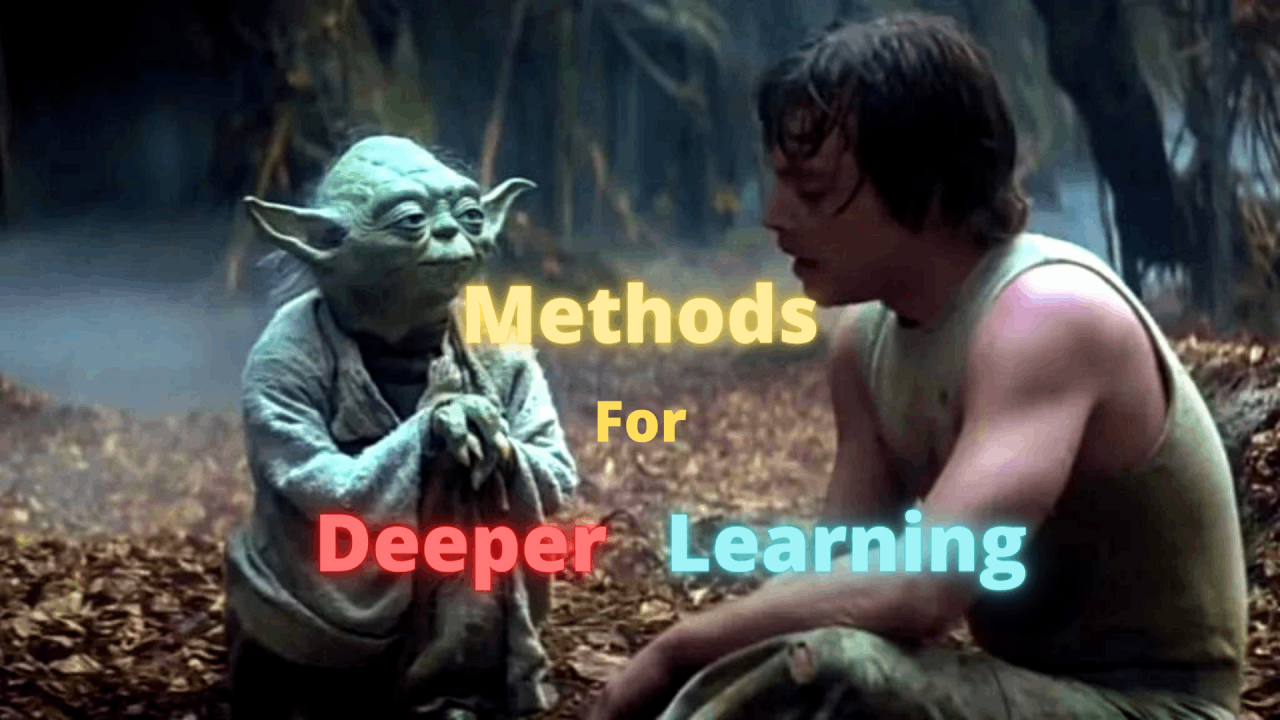Methods for deeper learning
Tips about learning effectively from the book Make it stick.

Bloom’s taxonomy describes six levels of cognitive learning. They are remembering, understanding, applying, analyzing, evaluating and creating. The last levels represent the highest level of learning. No wonder that they are harder to reach. This week I finished reading the book Make it Stick: The science of successful learning by Henry L. Roediger III, Mark A. McDaniel, and Peter C Brown. The authors of this book mostly seem to focus on the very first level, i.e., remembering.
Many teachers and students simply don’t care about the remembering part much. After all, just being able to recite something is not an indication of mastery in the subject. I also believe that. The authors of this book also acknowledge it. In the book, they describe many methods for learning effectively, which mostly seem to help with the remembering part. But, they go much deeper. A simple reason why we need to care about remembering is that it forms the base level for the higher levels of learning. If we can’t remember and recall, we obviously can’t apply it when needed. Creating something, using what we have learned, also requires us to first store it in our brain.
The point the authors make in the book is that there are differences in how we approach remembering. There are methods that can help us store things in our short-term memory and seem very productive. But they are not helpful for achieving higher levels of learning. Cramming on the night before the exam is an example of that. Many students do that. It seems more productive. Every so often, they manage to get good scores in the exam as well. However, they quickly forget the learnings after the exam is over. This is not so helpful. We don’t just want to study to pass the exams, right?
So, the goal is to store the learned concepts in our long-term memory in such a way that is useful for achieving higher levels of learning. The authors suggest a few methods in the book and also explain how they are different from the intuitive methods most learners use.
The key concept behind those skills is: Learning is deeper and more durable when it is effortful. Some of these tips we saw in one of my previous post.
Simply rereading the text or watching the video lectures doesn’t require enough efforts. Repeated reading feels very intuitive. Students do that a lot. Rereading the texts makes it more familiar and hence creates the illusion of mastery. Authors recommend notching it up a little by practicing retrieving. That requires more efforts. Spaced repetitions make it even better. Allowing some time to pass before we revisit the concepts, allows our brain to forget it a little and hence requires more effort to recall.
Testing ourselves while learning is another way to give more exercise to our brain. It not only makes it work harder, but also gives us an idea about what we know and what we don’t know. We are often very poor judges of what we know and what we don’t. Simple quizzes during the classroom lecture are very effective (again, not so intuitive) to help students master the concepts. Of course, doing well in those quizzes is not enough signal of mastery, but it just helps students put stuff in long-term memory which eventually helps with getting mastery. Students can also incorporate self-designed mini quizzes when they study on their own. The authors also talk about desirable levels of difficulties. We start with low difficulties and then increasing it. And of course, the tests are useless if there is no reflection or analysis done after the test. Simply just keep failing is not enough. We need to know why we are failing.
Another technique that is even less intuitive is called interleaving. It is more intuitive to master one concept and then move on to the other. Interleaving is about mixing it all up. It requires more effort that way. Interleaving also feels slower to the learners because they can’t get the sense of mastery. But interleaving helps us learn the concepts in more abstract way. One experiment the authors described related to this was very surprising. The students were divided into two groups. One group practiced throwing a ball to a specific distance of 3 meters. The other group practiced throwing a ball to 2 and 4 meters distances (mixed up). Later on after a few days, when they were tested to throw a ball at the distance of 3 meters, the second group did better! Counterintuitive since they never practiced throwing the ball to 3 meters distance. The interleaving helps us generalize better. Many good teachers also use this concept and often deviate from the course textbook chapter order.
The authors dedicated an entire chapter about avoiding the illusion of knowing. When we are incompetent, we mostly overestimate our competences. So for us, there is a little reason to change. To avoid it, we must learn to evaluate competences when we see it in others. The illusion is also in the other direction as well. It is called the curse of knowledge. It is our tendency to underestimate how long it will take others to learn something that we have already mastered. Teachers face that a lot. The best way to correct both types of illusions is to calibrate ourselves with peers. For that, pick the right peers first. We need to learn to pay attention to the cues we are using to judge our competencies.
Many people focus on the learning styles (audio, video, text etc.) while learning or teaching. Authors in this book refuse to buy that, citing the apparent lack of evident based studies on the topic. They agree that most people have a different preferred learning style. But according to them, there are other differences that matter more when it comes to learning. Furthermore, they strongly believe that the presentation style should be associated to the topic being taught and not to the individual learners. The learning differences that matter is not the preferred style of learning, but how the individual sees themselves, evaluates their capabilities, their ability to learn abstract concepts and associating them with the prior knowledge, building mental structures etc. We should focus more on these differences than the learning styles of individuals. These areas can also be evaluated and improved if we focus on them.
Overall, there are some very good insights about achieving mastery in the book. To be honest, I find that book full of unnecessary explanations of the same concepts. To save time, just read the last chapter, it covers everything important along with specific tips for students and teachers. Maybe I’ll cover some of those tips in future blogs. Stay tuned.
My favorites:
Video of the week: The spring paradox
Quote of the week: “You do not rise to the level of your goals. You fall to the level of your systems.” — James Clear, Atomic Habits
